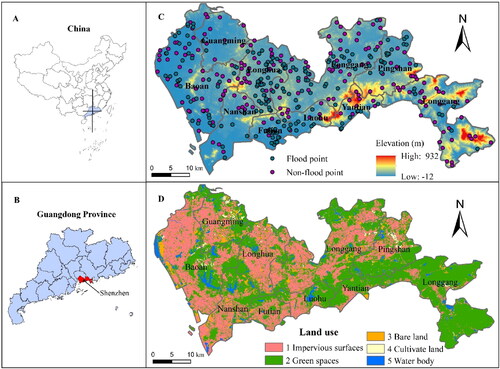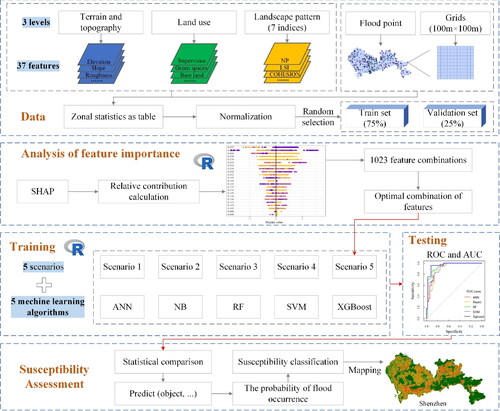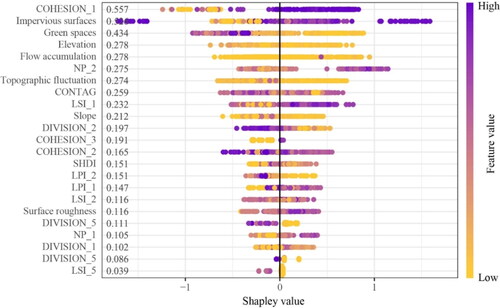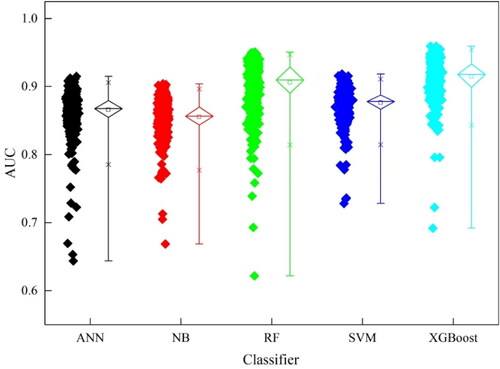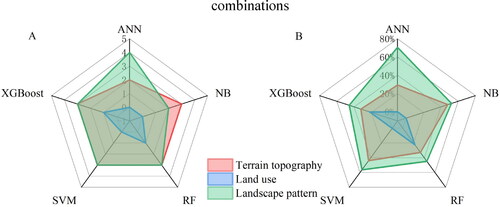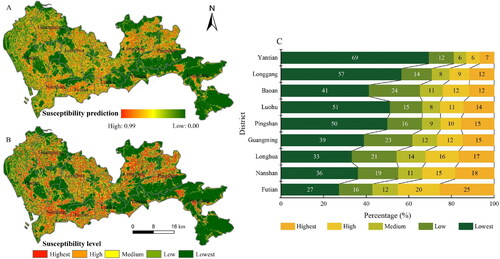Figures & data
Table 1. Landscape pattern index.
Table 2. Feature variables (the serial number in the names of landscape pattern features correspond to the serial number of land use type in Figure 1D).
Table 3. Experimental protocol.
Table 4. Feature combinations for each classifier to obtain the maximum AUC.
Data availability statement
Data will be made available on request.

